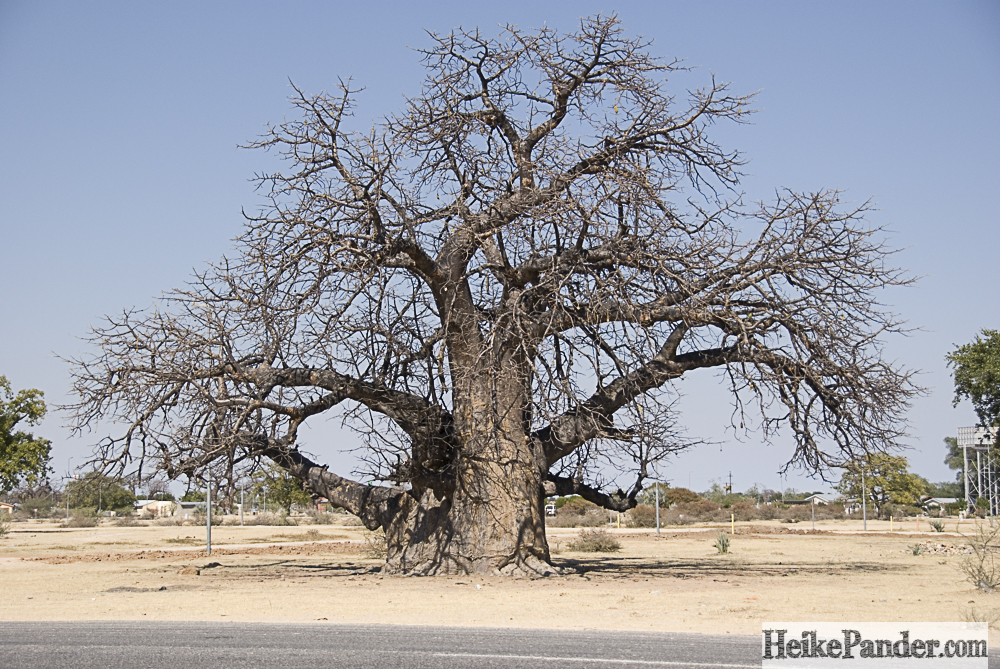More Information: www.baobabstories.com
There is no doubt – I am fascinated by Baobab “trees“ (Adansonia digitata). Baobabs impress by their size and the fact that they are leafless throughout most of the year. Their looks above the ground resemble that of mighty roots – therefore they are sometimes called “upside down trees”. The age of those giants is difficult to estimate. They do have annual rings common in other tree trunks but nevertheless these “rings” are no reliable indicators of the Baobab’s age. They might only indicate whether the tree had sufficient water or not but not necessarily the timespan in which the water was available to the tree.

Baobab, Outapi, Namibia
Baobabs are real survivalists – they love very hot and dry environments with very little rainfall. Temperatures below 12°C and a high degree of salinity in the soil where they root are not to their liking. At first glimpse it seems unusual that their leaves sprout weeks before the start of the rainy season. Nature has arranged it that way because Baobabs do not like “wet feet”. Early leaves protect the roots from standing in water too long – the roots would rot and the tree die otherwise.
Baobabs contain large amounts of water which is used in different ways by people and animals during dry periods. Elephants tear whole branches off the tree or tear out chunks of the trunks. They like to chew the bark because it contains minerals and water. That does not necessarily kill the trees but it may have an impact on their further growth and development which can be seen in bizarre forms and shapes particularly in areas with a high elephant population.

Baobab, Outapi, Namibia
Humans use the Baobabs in many different ways. Mainly young leaves and fruit for food purposes or for preparation of medicines. The bark of the trees is used for bast fibres and ropes which stand out in very high durability. The trees can also master this modest treatment. I am very impressed by the Baobab’s ability to regenerate itself. I have seen Baobabs with unbelievable injuries and scars on their trunks and branches but they were still strongly rooted and defying their fall. I could also witness that even fallen and uprooted trees still sprouted leaves.

Baobab, Namibia
I am not only interested in the Baobab’s physical appearance or biological data but rather in stories and myths that are ranked around the existence of said trees – in particular the myths of origin fascinate me. I am very grateful that I could gather some of these stories and myths during my journey in the Southern African Region.

Baobab, Outapi, Namibia
Nevertheless, if you happen to know of such stories and would like to share them with me I would be delighted if you contacted me HERE.
If you like to get more information about the “giants” you can find it – among others – in the following sources:
- www.baobabstories.com: Webseite über Baobabs
- Wickens, G. E.; Lowe, P.: The Baobabs. Pachycauls of Africa, Madagascar and Australia; Springer 2008
- Watson, Rupert: The African Baobab, Struik 2007
- Drake, Ellen: A Book of Baobabs, Aardvark Press, 2006
- Pakenham, Thomas: The Remarkable Baobab, Norton, 2004
- Pakenham, Thomas: Remarkable Trees of the World, Weidenfeld & Nicholson, 2002
- Wickens, G. E.: The Baobab – Africa’s Upside-Down Tree, Kew Bulletin Vol. 37, No. 2, 1982



